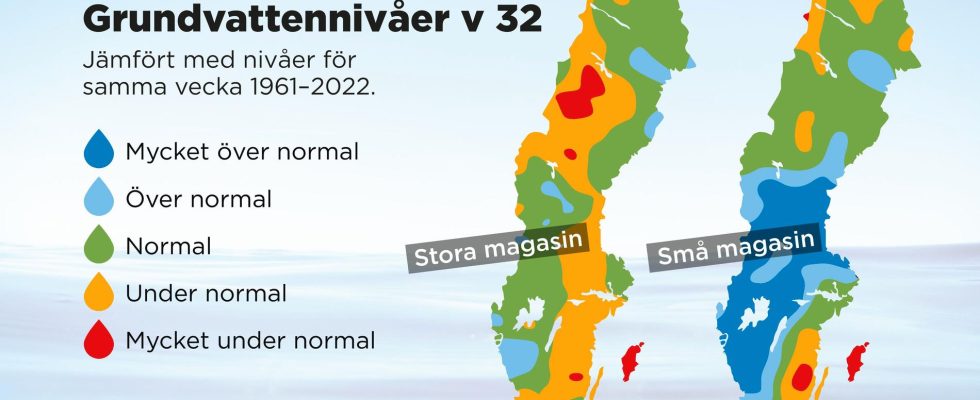Despite the large amounts of rain that storm Hans has brought, there is still a risk of water shortages in parts of Sweden this week, warns Sweden’s Geological Survey (SGU).
In small reservoirs, the warning applies to parts of Skåne, Blekinge, Gotland, Östergötland and Kalmar counties.
– It can feel a bit strange and uncomfortable for us to issue warnings like this when you see how much water is flowing around the country, says hydrogeologist Anders Retzner at SGU.
But even if small reservoirs react more quickly to the recent weather than large reservoirs do, there is always a certain delay from the time the rainwater reaches the ground until it has been transported down and formed groundwater, he explains.
– There is a natural delay that will always be there.
SGU also warns of the risk of water shortages in large reservoirs in parts of Skåne, Kronoberg County, Kalmar County and Gotland.
Early turning point
Normally, groundwater levels do not start to recover until September, but in the small water reservoirs in large parts of southern and central Sweden, the Geological Survey of Sweden notes that the turning point is already coming.
– In the small reservoirs in southern and central Sweden, with the exception of Gotland and the Kalmar region, we assess that this year’s period with low groundwater levels is probably over. It would require a rather extreme scenario for us to drop back to very low levels again, says Anders Retzner.
Dry on Gotland
The fact that it looks different in Kalmar County and Gotland is because July has not been as rainy there as in the rest of Sweden. The ground there was therefore very dry when the August rains came.
– That’s why you don’t see this fast super recovery that we do in the rest of the country.
In the large water reservoirs, the basic levels may continue to drop slightly, Anders Retzner assesses. The heavy rain will affect them too, but with a delay. Even for them there are therefore conditions for a good recovery.
FACTSGroundwater
Groundwater is found almost everywhere below the ground surface, for example in soil layers or in cracks in the bedrock and is usually divided into small and large groundwater reservoirs.
The large aquifers are often gravel pits, where a lot of water collects. They react slowly to changes in the weather, such as drought.
The small groundwater reservoirs can be found, for example, in moraine or ancient rock. They can quickly dry out if the withdrawal of water is large and there is no precipitation.
The big magazines are, relatively speaking, not that many. But almost half of Sweden’s population gets municipal water from there.
The small magazines are used by individual municipalities, but above all in individual wells. About one million Swedes get water for their permanent residence from their own well.
A little more than half of the population gets municipal water from lakes or streams, not from groundwater. These municipalities may still have to introduce irrigation bans sometimes, because the management system cannot cope with a very high consumption.
Source: Geological Survey of Sweden
Read more
